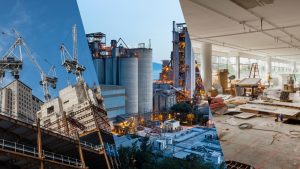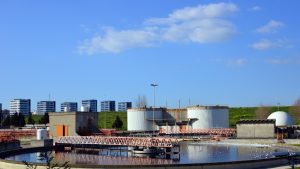According to the experts, urban development has always been a double-edged sword! What do you think about this statement? While it has driven economic growth and improved living standards, it has created challenges like overcrowding, resource depletion, pollution, and inefficient infrastructure. Traditional urban planning failed to keep pace with population booms and environmental concerns, and this led to ecological degradation and declining quality of life. These pressing issues called for a groundbreaking shift in how cities grow and operate, sparking the development of the ‘Sustainable city’ concept. Since it bridges technology with sustainability, it offers innovative solutions to age-old urban problems. However, what role does technology play here?
In this article, we cover everything about the role of technology in creating sustainable cities.
In this article, we cover everything about the role of technology in creating sustainable cities.
What are Sustainable Cities?
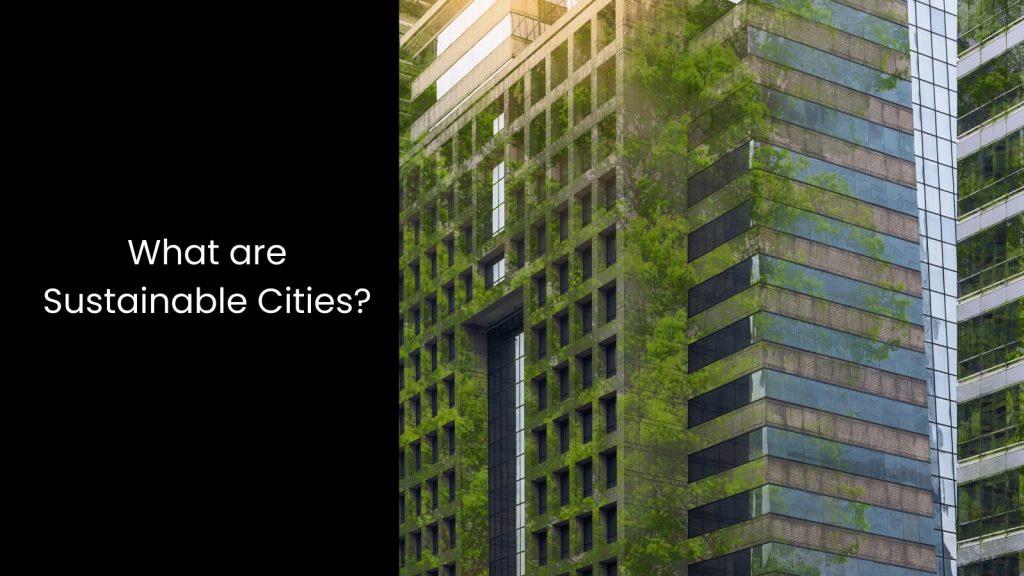
- Sustainable cities represent a modern approach to urban development, focusing on creating livable environments that balance economic growth, environmental care, and social well-being.
- However, this is not a new concept, as its history dates back to the 1960s. Yet the incorporation of technologies into the smart cities concept began only in the 2005 era.
- These cities embrace renewable energy, efficient transportation, and smart infrastructure to reduce carbon emissions and conserve resources. They prioritise green spaces, clean water, and proper waste management to enhance quality of life while ensuring ecological harmony.
- In this concept, advanced technologies like IoT, AI, and data analytics take centre stage in managing urban systems efficiently and supporting long-term goals. Communities actively participate in shaping these cities, encouraging inclusivity and innovation.
- This is where urban planners design compact layouts that minimise land use while optimising energy and water systems. In the purest sense of the word, these sustainable cities aim to address climate change, population growth, and resource scarcity through resilient strategies. They provide equitable opportunities, improve public health, and create smarter, greener, and healthier spaces that meet current needs without compromising future generations’ ability to bloom.
Key Ways Technology Can Be Employed to Create Sustainable Cities
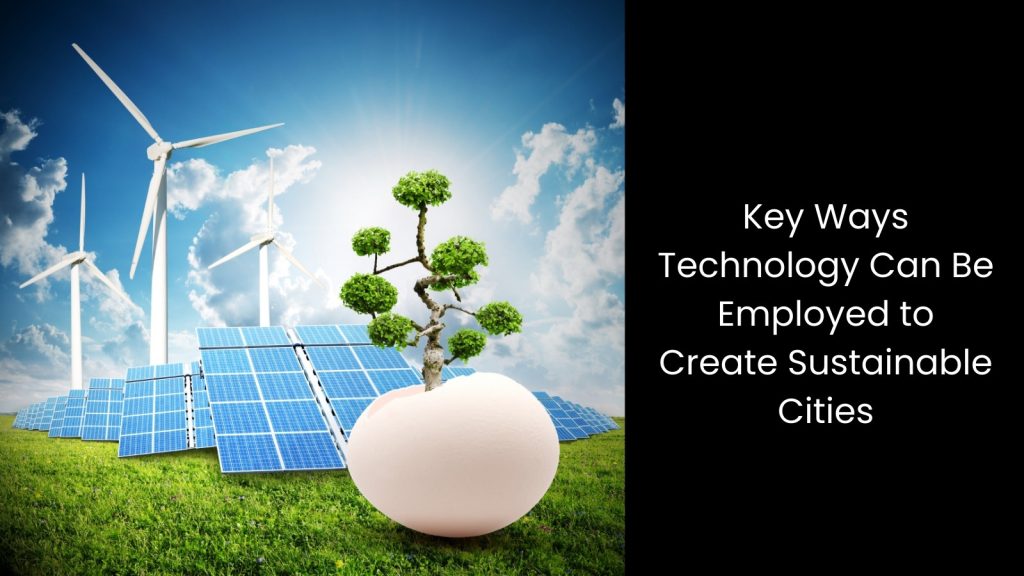
Smart Energy Management
Energy management has to go beyond traditional boundaries when it comes to smart cities, as the growing demand for power requires innovative solutions to ensure sustainability.
Technology enables cities to optimise energy usage through smart grids, renewable energy integration, and energy-efficient systems, reducing carbon footprints. Plus, smart grids use advanced sensors and AI-driven analytics to balance supply and demand, prevent outages, and improve electricity distribution.
Solar panels and wind turbines play a significant role in renewable energy adoption, allowing cities to generate clean energy locally. Energy storage systems, like advanced batteries, store excess power and release it when needed, ensuring reliability. IoT devices like smart meters help residents and businesses monitor their energy consumption in real time, encouraging conservation and cost savings.
On the other hand, intelligent building systems use automation to control lighting, heating, and cooling, reducing unnecessary energy use. Likewise, these technologies create a dynamic energy ecosystem that adapts to urban challenges, cuts emissions and ensures resource sustainability.
With smart energy management, cities become more resilient, efficient, and capable of supporting growing populations without compromising the environment.
Technology enables cities to optimise energy usage through smart grids, renewable energy integration, and energy-efficient systems, reducing carbon footprints. Plus, smart grids use advanced sensors and AI-driven analytics to balance supply and demand, prevent outages, and improve electricity distribution.
Solar panels and wind turbines play a significant role in renewable energy adoption, allowing cities to generate clean energy locally. Energy storage systems, like advanced batteries, store excess power and release it when needed, ensuring reliability. IoT devices like smart meters help residents and businesses monitor their energy consumption in real time, encouraging conservation and cost savings.
On the other hand, intelligent building systems use automation to control lighting, heating, and cooling, reducing unnecessary energy use. Likewise, these technologies create a dynamic energy ecosystem that adapts to urban challenges, cuts emissions and ensures resource sustainability.
With smart energy management, cities become more resilient, efficient, and capable of supporting growing populations without compromising the environment.
Data-Driven Urban Planning
Urban planning has to embrace advanced technology to tackle the challenges of rapid urbanisation and environmental concerns while creating sustainable cities. Smart city platforms and Geographic Information Systems (GIS) aid in designing sustainable urban environments based on real-time data.
These platforms use IoT sensors, drones, and AI-powered analytics to gather insights about traffic patterns, energy usage, population density, and environmental conditions. GIS technology maps and visualises data, helping planners identify optimal locations for green spaces, public transport, and infrastructure development. At the same time, predictive analytics tools help planners forecast future needs, such as housing demand or transportation requirements, ensuring efficient resource allocation.
Apart from that, advanced modelling software enables architects to design energy-efficient buildings and eco-friendly layouts. Smart traffic systems reduce congestion and pollution by adjusting signals based on traffic flow data. These technologies create interconnected systems that allow cities to grow while lowering environmental impact.
As you can see, data-driven urban planning prioritises livability, resilience, and efficiency, ensuring urban areas can support growing populations sustainably.
These platforms use IoT sensors, drones, and AI-powered analytics to gather insights about traffic patterns, energy usage, population density, and environmental conditions. GIS technology maps and visualises data, helping planners identify optimal locations for green spaces, public transport, and infrastructure development. At the same time, predictive analytics tools help planners forecast future needs, such as housing demand or transportation requirements, ensuring efficient resource allocation.
Apart from that, advanced modelling software enables architects to design energy-efficient buildings and eco-friendly layouts. Smart traffic systems reduce congestion and pollution by adjusting signals based on traffic flow data. These technologies create interconnected systems that allow cities to grow while lowering environmental impact.
As you can see, data-driven urban planning prioritises livability, resilience, and efficiency, ensuring urban areas can support growing populations sustainably.
Air Quality Monitoring and Control
Since the smart world is all about AI advancements, technology comes in the middle of improving air quality and making cities more sustainable. Let us explain how this works.
Advanced sensors and AI-driven systems monitor pollution levels and guide policies to maintain clean air. These sensors are placed strategically across the city to detect harmful pollutants like nitrogen dioxide, carbon monoxide, and particulate matter. They provide real-time data to local authorities, helping them understand pollution patterns and make informed decisions.
AI algorithms analyse this data, predicting air quality trends and identifying areas that need immediate attention. Cities can use this information to adjust traffic flow, promote cleaner transportation options, or enforce pollution regulations. Smart systems can also activate air purifiers or warn citizens about high pollution levels.
These innovations are what make cities reduce their environmental impact, improve public health, and create a cleaner, greener urban environment.
Advanced sensors and AI-driven systems monitor pollution levels and guide policies to maintain clean air. These sensors are placed strategically across the city to detect harmful pollutants like nitrogen dioxide, carbon monoxide, and particulate matter. They provide real-time data to local authorities, helping them understand pollution patterns and make informed decisions.
AI algorithms analyse this data, predicting air quality trends and identifying areas that need immediate attention. Cities can use this information to adjust traffic flow, promote cleaner transportation options, or enforce pollution regulations. Smart systems can also activate air purifiers or warn citizens about high pollution levels.
These innovations are what make cities reduce their environmental impact, improve public health, and create a cleaner, greener urban environment.
Waste Management Solutions
Waste is the biggest enemy of urbanisation in modern times, but technology offers robust solutions to tackle this challenge and build sustainable cities.
If we take IoT-enabled waste collection, recycling technologies, and waste-to-energy systems, they can enhance waste reduction and resource recovery. Smart waste bins with IoT sensors monitor fill levels and alert collection teams to empty them only when necessary, reducing fuel consumption and traffic congestion. Recycling technologies use advanced sorting systems like AI-powered robots to separate recyclable materials efficiently, increasing the recovery rate and minimising landfill waste.
Waste-to-energy systems convert non-recyclable waste into renewable energy, such as electricity or heat, reducing dependency on fossil fuels and shrinking carbon footprints.
So, such technologies not only reduce pollution but also create opportunities for circular economies, where waste becomes a resource instead of a problem. Smart waste management transforms cities into cleaner, greener, and more efficient spaces, ensuring a balanced relationship between urban growth and environmental preservation.
If we take IoT-enabled waste collection, recycling technologies, and waste-to-energy systems, they can enhance waste reduction and resource recovery. Smart waste bins with IoT sensors monitor fill levels and alert collection teams to empty them only when necessary, reducing fuel consumption and traffic congestion. Recycling technologies use advanced sorting systems like AI-powered robots to separate recyclable materials efficiently, increasing the recovery rate and minimising landfill waste.
Waste-to-energy systems convert non-recyclable waste into renewable energy, such as electricity or heat, reducing dependency on fossil fuels and shrinking carbon footprints.
So, such technologies not only reduce pollution but also create opportunities for circular economies, where waste becomes a resource instead of a problem. Smart waste management transforms cities into cleaner, greener, and more efficient spaces, ensuring a balanced relationship between urban growth and environmental preservation.
Intelligent Water Resource Management
If a municipal council or government plans out urban development, water resource management receives a critical spotlight because no city can function without efficient water systems.
If they opt for AI-powered smart water monitoring systems and desalination technologies, they can ensure efficient water distribution, leak detection, and conservation. These smart-systems use IoT sensors to track water flow in real time, quickly identifying leaks or inefficiencies in the network. AI algorithms analyse usage patterns to predict future demand, helping cities allocate resources effectively and avoid shortages. Desalination plants powered by advanced filtration and energy-efficient technologies convert seawater into freshwater, addressing water scarcity in coastal areas. Rainwater harvesting systems, integrated with digital platforms, store and reuse water for irrigation or non-drinking purposes.
Furthermore, smart irrigation controllers adjust water use based on weather forecasts and soil conditions, saving significant amounts of water. Technologies like satellite imagery and drones monitor reservoirs and rivers to detect pollution or changes in water levels.
It is an optimistic fact that such intelligent water resource management builds a sustainable framework for urban living, ensuring cities can meet the growing demands of populations while protecting this precious resource for future generations.
If they opt for AI-powered smart water monitoring systems and desalination technologies, they can ensure efficient water distribution, leak detection, and conservation. These smart-systems use IoT sensors to track water flow in real time, quickly identifying leaks or inefficiencies in the network. AI algorithms analyse usage patterns to predict future demand, helping cities allocate resources effectively and avoid shortages. Desalination plants powered by advanced filtration and energy-efficient technologies convert seawater into freshwater, addressing water scarcity in coastal areas. Rainwater harvesting systems, integrated with digital platforms, store and reuse water for irrigation or non-drinking purposes.
Furthermore, smart irrigation controllers adjust water use based on weather forecasts and soil conditions, saving significant amounts of water. Technologies like satellite imagery and drones monitor reservoirs and rivers to detect pollution or changes in water levels.
It is an optimistic fact that such intelligent water resource management builds a sustainable framework for urban living, ensuring cities can meet the growing demands of populations while protecting this precious resource for future generations.
Paving the Way for Sustainable Cities Using New-Age Technology
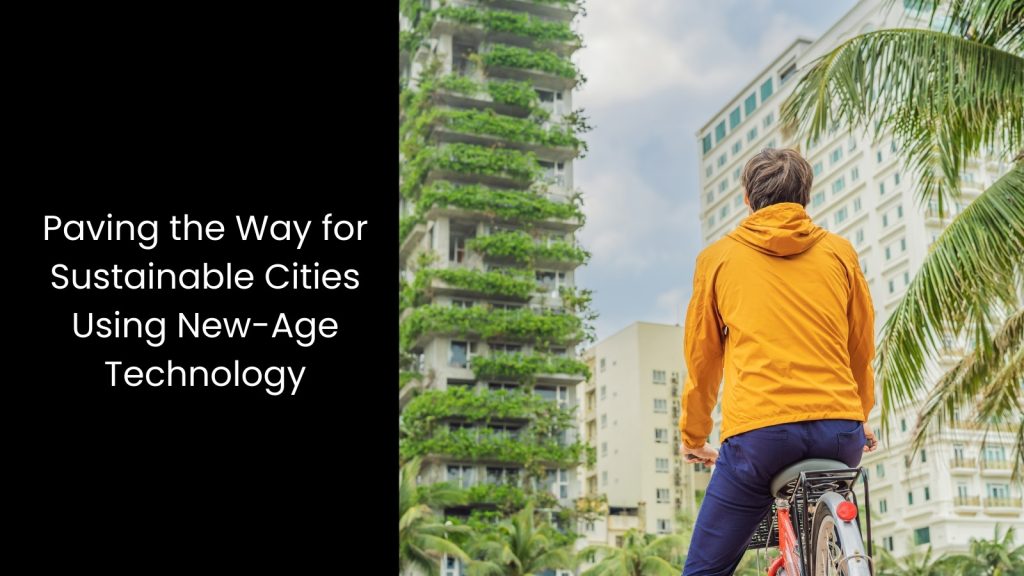
The journey toward sustainable cities starts with using transformative and new-age technologies like AI, IIoT, and Digital Twin solutions. These advancements redefine urban living by optimising resources and reducing environmental impact. It is time to act smarter, not harder, in shaping cities that balance development with the urgent call for sustainability. However, collaborating with an industry expert will keep your software reliability concerns at bay beyond any doubt.


